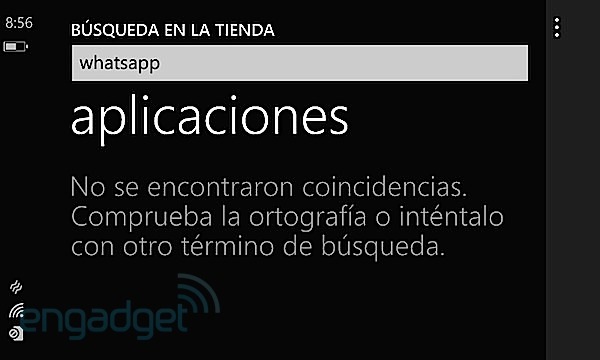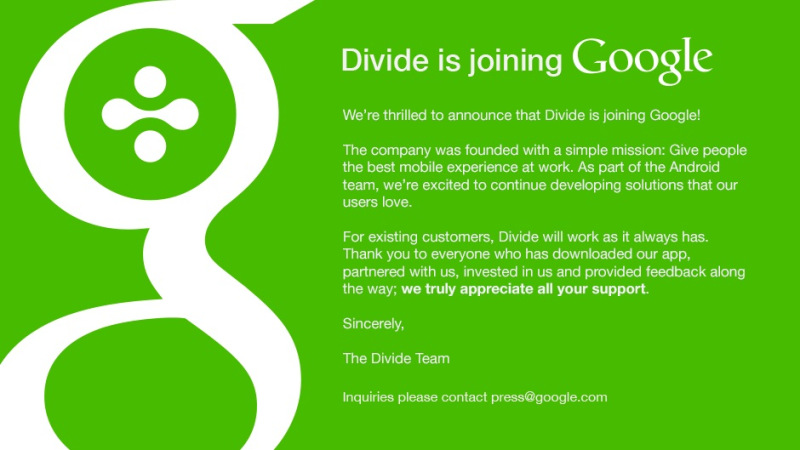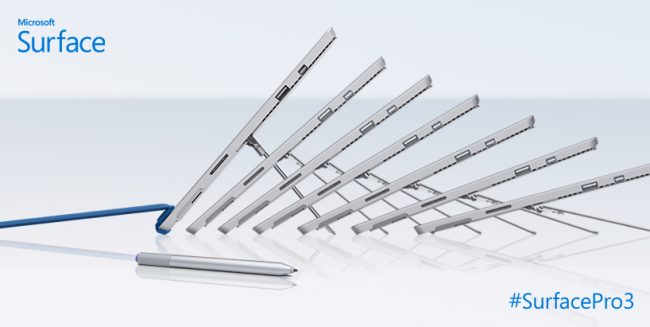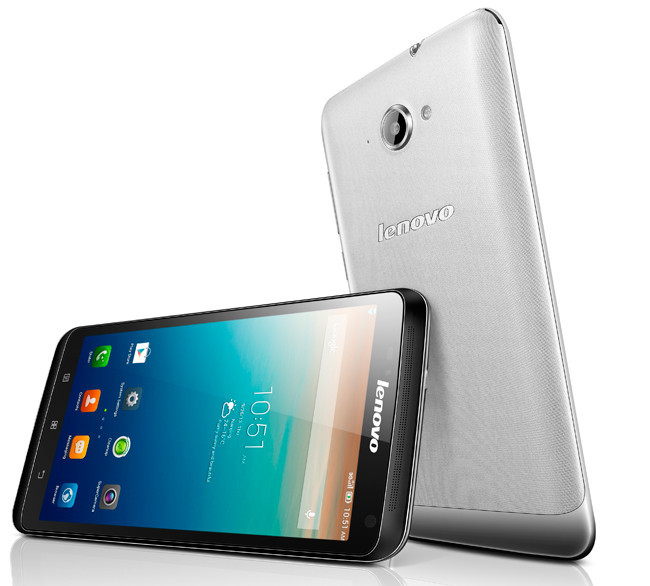Observatorio tecnológico del 19 al 25 de mayo
This week, the Indra Technology Observatory brings you the following stories:
- WhatsApp removed from Windows Phone store
- Google buys Divide, signaling a new business approach for Android
- Microsoft Surface Pro 3
- Netflix still expanding in Europe but bypassing Spain
- Lenovo wants to bring its cellphones to Spain by Christmas

"Due to technical issues, we have chosen to unpublish WhatsApp Messenger on the Windows Phone platform." So far, that's the only explanation Facebook has given. In a move that has taken everyone by surprise, the popular messaging app WhatsApp has been removed from the Windows Phone store. Users who have already installed the app will be able to carry on using it as before, but anyone who wants to install it in their terminal will be stopped in their tracks when they try to download it. In a statement to The Next Web, Zuckerberg's company said it was working closely with Microsoft to resolve the issues, but failed to give a date for when things will be back to normal. So all we can do is wait and see.

Google has announced the acquisition of a startup called Divide, which specializes in creating corporate solutions for mobile devices and has focused in particular on becoming a third-party platform in this respect for Android, Google's operating system. That determination has clearly paid off as the people at Mountain View value the work of the startup so much that they have decided to buy the company and make it part of the Android team. Divide lets you create self-contained spaces in your smartphone or tablet to keep your personal and business environments separate. However, it's not just a case of two different sections, because the one where you keep your work information and files are protected and encrypted in a different way from how Android normally functions. This is particularly useful for companies that use the BYOD, (Bring Your Own Device) system. The Divide team will join Android's development team, so it would seem that Google intends to target its mobile platform at the corporate sector, offering advantages or at least similar functions to those of its competitors (most notably BlackBerry, king of this market). The details of the deal are still unclear, as is the figure that Google has had to fork out to purchase the company, but what we can be sure of is that the next Android versions will focus much more on businesses in an attempt to seduce the corporate sector with security, encryption and authorization solutions as well as device administration, even in BYOD environments. To say it's an interesting alliance is something of an understatement, because the fact is that it will make Android, the most widely used mobile platform in the world, much more appealing to the professional sector where it still has a lot of ground to gain.

Barely two years have passed since Microsoft presented its Surface tablets, and now there's a new version. At a recent event in New York, the people from Redmond unveiled Microsoft Surface Pro 3, whose main enhancements are its size and weight, greatly criticized in the earlier versions. The key change is the display size, now 12 inches instead of 10.6. It's also thinner (less than 1 cm). Microsoft's aim with this device is that it will replace not only your tablet but your laptop as well, so you'll have everything you need in a single device.
Before we go any further, let's take a look at the specifications:
|
|
Microsoft Surface Pro 3 |
|
Display |
12 inches, 3:2 aspect ratio, 2160x1440 pixels |
|
Size |
Thickness: 9.1 millimeters |
|
Weight |
800 grams |
|
Processor |
Intel Core i3/i5/i7 |
|
RAM |
4/8 GB |
|
Internal storage |
64/128/256/512 GB |
|
Operating system |
Windows 8.1 |
|
Rear-facing (main) camera |
5 MP |
|
Front-facing camera |
5 MP |
|
Ports |
1 x USB 3.0, Mini DisplayPort, microSD reader |
Microsoft made its Surface Pro 2 slimmer and lighter than the previous version, and it was obviously going to do the same with this new version. In fact, the design team has managed to slim it down to just 9.1 millimeters with a very attractive weight of 800 grams. All in all, a Surface Pro 3 and its keyboard are lighter than a MacBook Air, one of the market leaders in this respect. Working closely together, Microsoft and Intel have come up with a set of customized components for Surface Pro 3, like the fan, which according to Panos Panay they've made so efficient that you won't see or hear it. That's quite an achievement considering that it wasn't exactly noisy in the earlier versions. Last but not least, Surface Pro 3 has kept its VaporMg casing, making it robust, light and pleasing to touch. Panos Panay "proved" just how resistant it is by dropping the tablet on the floor (though it was carpeted). Microsoft was keen to enhance its Surface Pro for a use that still hasn't really been pulled off: as a laptop. The first enhancement in this respect is the Kickstand. Three years of development have finally resulted in a support that can be positioned at any angle from 22 to 115 degrees and is just as robust as previous versions. The keyboard covers have also been enhanced. As well as being ultra-thin, they have a bigger trackpad, making it much easier to use the tablet as a laptop. Microsoft has therefore addressed one of the greatest complaints about the earlier versions, namely that the trackpad wasn't exactly the most user-friendly one on the market. The new Type Covers are also more stable. With Surface Pro 3, the cover has a magnetic connection to the tablet, keeping the keyboard steady and much more comfortable to use on your lap. Panos Panay insists that the new Surface Pro 3 accessory is not a stylus but a pen, and the reason for such insistence is that the Redmond people have managed to make the experience as natural as possible. As well as improved precision thanks to minimal parallax effect, the delay between moving the optical pencil to seeing the effects on screen is also minimal. And, as you would expect from Microsoft, OneNote and the cloud are important features, even with a pencil. The Redmond people want you to be able to use Surface Pro 3 exactly as you would use a notebook and a normal pen: click the pen and start writing. The Surface Pro 3 pen comes with a button which activates the tablet when you click it and shows you a blank OneNote screen for you to write on. Double-click, and your scribbles are instantly saved to OneNote. The Microsoft Surface Pro 3 will be available in several models with prices starting at 799 dollars. In the United States, you can pre-order one as from tomorrow, and in Spain and another 25 countries they'll be available by late August. Here's the complete price list.
|
Storage/Processor |
Intel Core i3 |
Intel Core i5 |
Intel Core i7 |
|
64 GB |
$799 (4 GB RAM) |
N/A |
N/A |
|
128 GB |
N/A |
$999 (4GB RAM) |
N/A |
|
256 GB |
N/A |
$1,299 (8GB RAM) |
$1,549 (8 GB RAM) |
|
512 GB |
N/A |
N/A |
$1,949 (8 GB RAM) |
As for the accessories, the same as the earlier versions:
- Type Cover: 129.99 dollars
- Additional Surface Pen: 49.99 dollars
- Additional power supply: 79.99 dollars
- Docking Station: 199.99 dollars
- Ethernet Adapter: 39.99 dollars

This week Netflix took a gigantic step to consolidate its presence in Europe by announcing its arrival in Austria, Belgium, France, Germany, Luxembourg and Switzerland. These countries will all receive the content streaming service by the end of 2014 but, as you will have noticed, Spain is not on the list, having been bypassed by the famous streaming service provider. It's unclear what pricing plans and content the newcomers will receive, although what is certain is that they will not qualify for the same fee that current users will enjoy for the next two years (the new one is higher). This move continues the company's expansion across Europe, joining the United Kingdom, Ireland, Finland, Norway, Sweden and the Netherlands.

This week Lenovo announced its fourth-quarter financial results, with earnings showing a 25% rise thanks to increased smartphone sales. Specifically, the company sold more than 50 million mobile devices, up by 72% on the previous year. In the next few months Lenovo aspires to climb to third place in the mobile device manufacturer ranking, a position currently held by Huawei, and in the longer term it aims to pass Apple and Samsung as well. In its quest to sell more cellphones, the Chinese company will market its Lenovo brand worldwide, assisted by its recent acquisition of Motorola. Maite Ramos, general manager of Lenovo's Iberia Consumer Business, said they wanted to bring their smartphones to Spain by Christmas. The company's initial plan was to launch them in Spain now, but its expansion plans have been put on hold following the acquisition of Motorola. Now, the sale of Lenovo cellphones in Spain depends on the global strategy with Motorola, so the dates are not 100% confirmed. One of the first smartphones to reach this country could be the Lenovo S Series.
